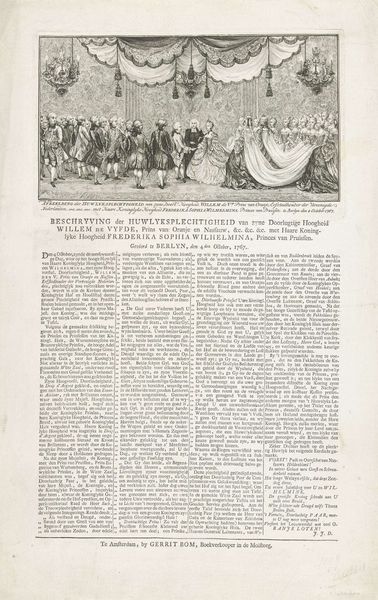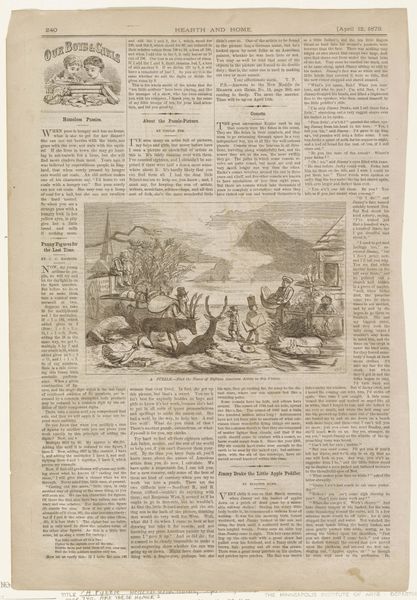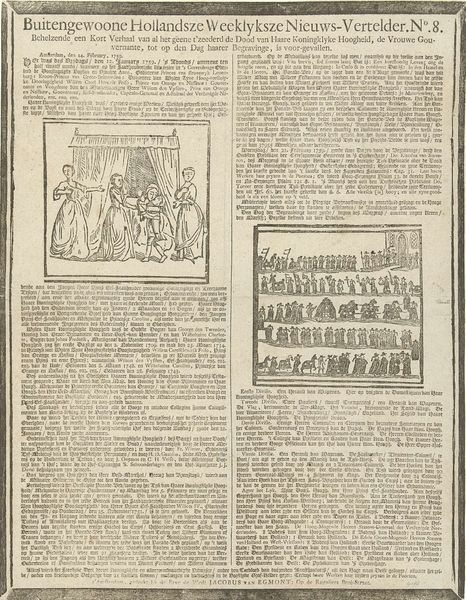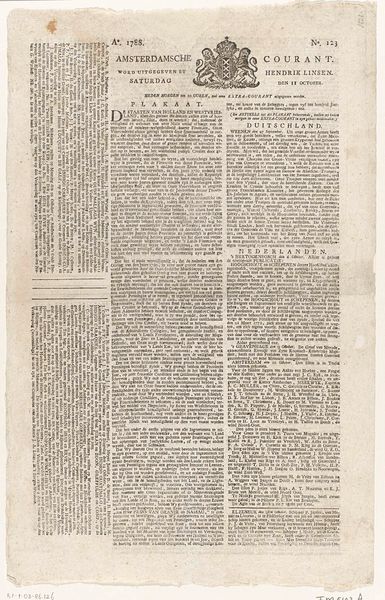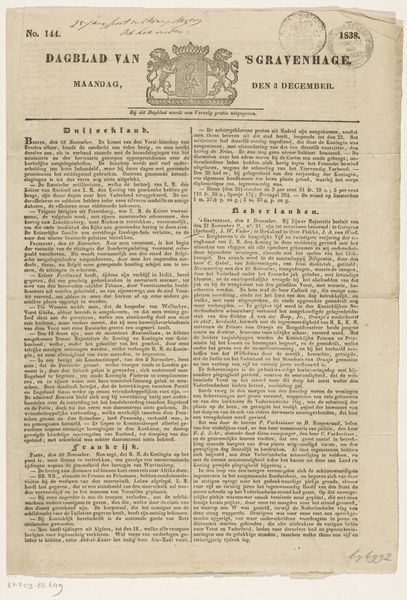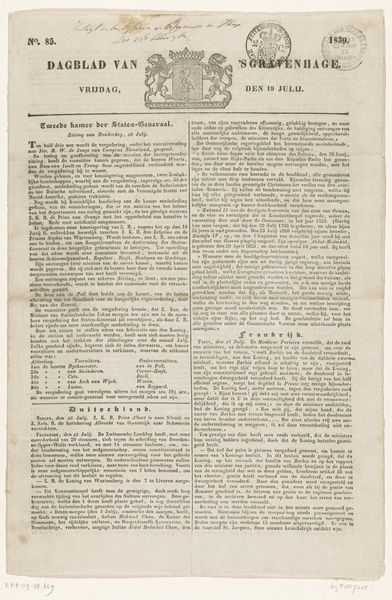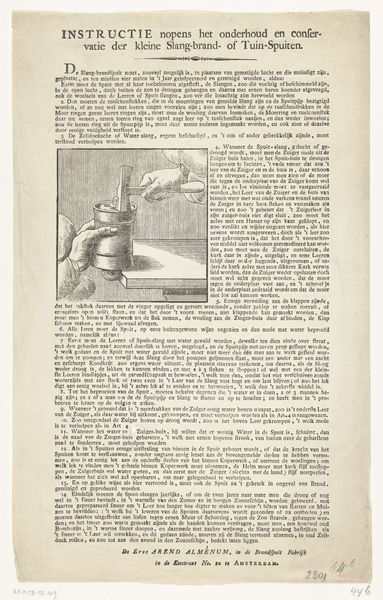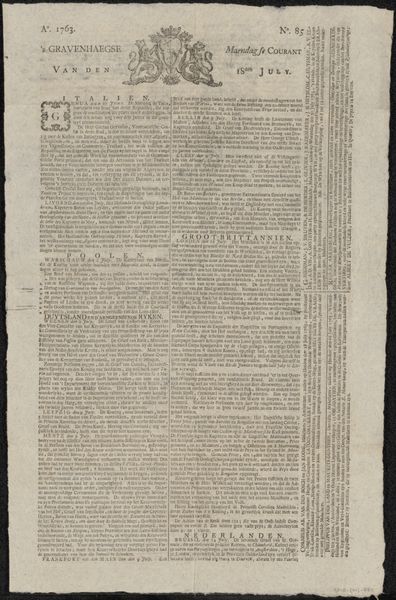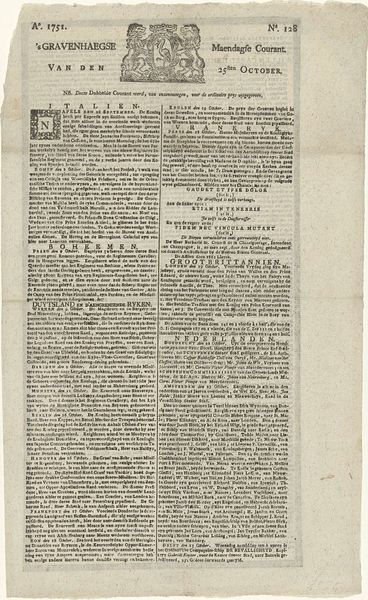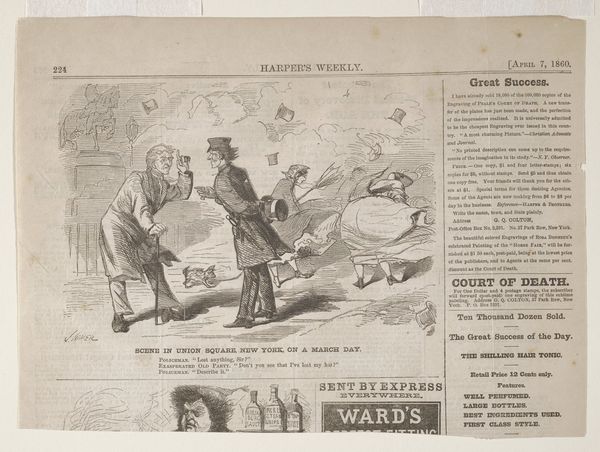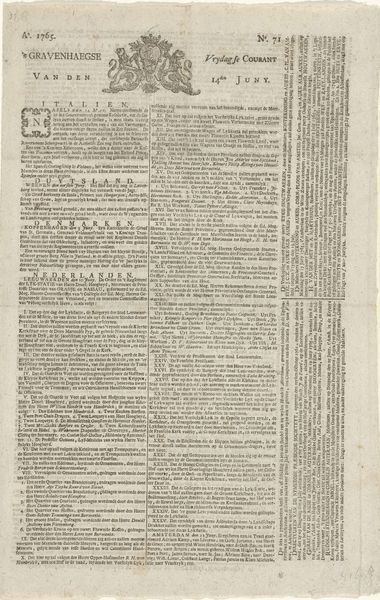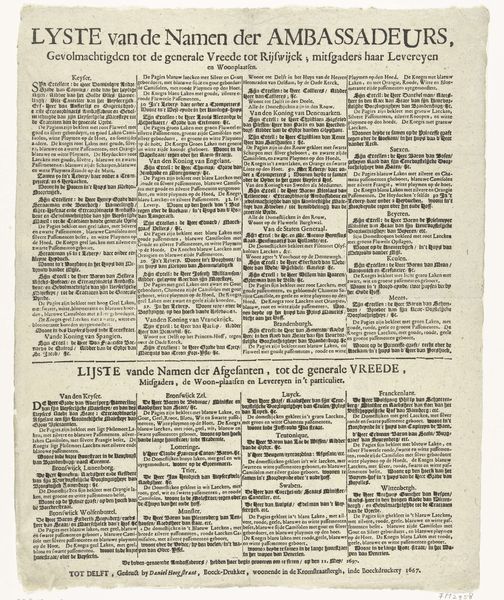
Spotprent op het voorgenomen huwelijk van de ex-koning Willem I, 1840 Possibly 1840
0:00
0:00
print, engraving
# print
#
caricature
#
old engraving style
#
newspaper layout
#
engraving
Dimensions: height 170 mm, width 230 mm, height 508 mm, width 380 mm
Copyright: Rijks Museum: Open Domain
Curator: What a striking visual artifact! Here we have an engraving, probably from 1840, aptly titled "Spotprent op het voorgenomen huwelijk van de ex-koning Willem I, 1840" – or "Spot Cartoon on the Planned Marriage of the Ex-King William I, 1840," attributed to Charles Jameson Grant. Its visual style suggests a broader cultural commentary beyond the specifics of the royal subject. It seems to originally come from a periodical titled, "The Penny Satirist." Editor: It definitely hits you with the impact of a news broadside. The density of detail, the almost aggressive lines of the figures... There’s a palpable feeling of public dissatisfaction or at least strong public opinion being aired here. Even before knowing the context, I sense an unraveling, or perhaps a surrendering of some kind in the visual symbols presented in this print. Curator: Absolutely. Charles Jameson Grant masterfully employs caricature to amplify the message. Notice the exaggerated features, particularly the King's figure and the figures next to him which seems to signify a kind of exchange. He’s rendered in a way that invites the viewer to immediately form an opinion, a reaction to his appearance and posture. Beyond aesthetics, however, is the cultural role the artwork assumes. How do political prints reflect and reinforce contemporary socio-political views and shape the narrative? Editor: Precisely. Caricature uses exaggeration, distorting recognizable attributes to convey underlying issues and anxieties. The composition almost stages a theater of disillusionment and resignation, but look closer at the barrels and jugs in the piece. They give symbolic depth. It's not just about the marriage; it’s about Dutch commerce as an emblem of the King’s reign itself. It is interesting that in English, the print has "giving up business" to indicate resignation, when we might wonder about the cultural association between monarchy, the economic health of a nation, and the individual success or failure of business. Curator: Exactly, so what might at first glance appear merely a political critique turns out to address deeper social, moral, and possibly spiritual, currents too. That is where images often surpass the immediacy of political discourse itself. Editor: I see. Well, investigating it from a cultural lens illuminates just how profoundly imagery influences memory and public discourse on matters of governance. What appeared initially as blunt satire is quite the intricate artifact and historical statement!
Comments
No comments
Be the first to comment and join the conversation on the ultimate creative platform.
